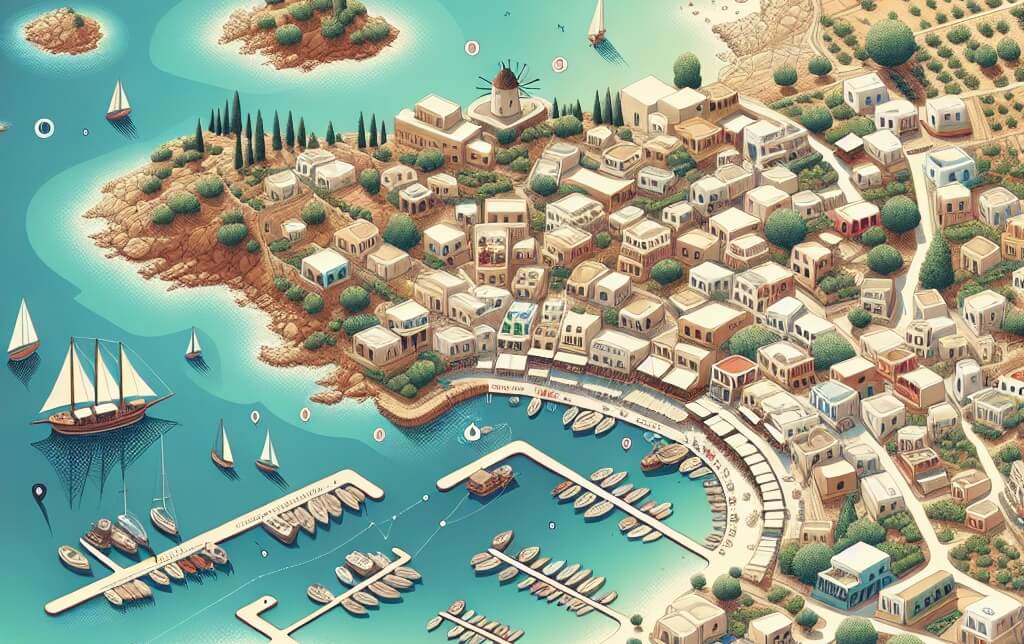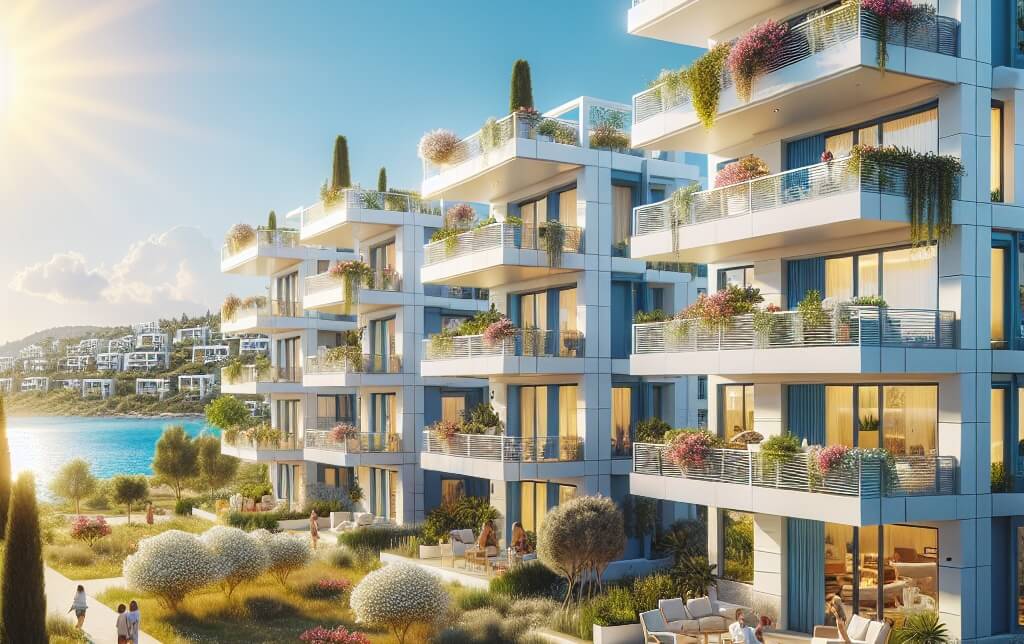
Discover the Charming Beauty of Greece's White City
For travelers seeking to immerse themselves in the enchanting allure of Greece's White City, a journey to the picturesque town of Oia in Santorini is a must. Renowned for its iconic white-washed buildings, cascading down the cliffs overlooking the azure Aegean Sea, Oia embodies the quintessential charm of the Greek islands. Stroll through its narrow cobblestone streets adorned with vibrant bougainvillea, and marvel at the breathtaking sunsets that paint the sky in hues of pink and orange. Indulge in the local cuisine at traditional tavernas, sip on crisp Assyrtiko wine, and lose yourself in the timeless beauty of this idyllic destination. Greece's White City beckons with its serene ambiance and captivating vistas, promising an unforgettable experience for those who venture to explore its alluring streets.
I. Introduction
The concept of a "Greece White City" evokes images of pristine white buildings against a backdrop of azure skies and crystal-clear waters. This vision is deeply rooted in the architectural and cultural heritage of Greece, particularly in the iconic white-washed buildings of the Cycladic islands. The stark white facades not only serve a practical purpose in reflecting the heat of the sun but also carry symbolic significance, representing purity, simplicity, and harmony with nature. This architectural style has become synonymous with the beauty and charm of the Greek islands, attracting visitors from around the world in search of a tranquil and idyllic escape.
II. Panoramic View
The panoramic view of the white city in Greece offers a breathtaking vista of the pristine buildings nestled against the azure backdrop of the Aegean Sea. From this vantage point, one can behold the harmonious blend of ancient architecture and modern amenities, creating a picturesque scene that encapsulates the essence of Greek beauty and history. The panoramic view allows visitors to appreciate the intricate details of the whitewashed buildings, adorned with vibrant blue accents, while also providing a sense of serenity and tranquility that is characteristic of the Mediterranean landscape. Overall, the panoramic view of the white city in Greece is a testament to the timeless allure and charm of this iconic destination.
III. Cycladic Architecture
III. Cycladic Architecture is a distinctive style of architecture found throughout the Greek islands, characterized by its simple and elegant white-washed buildings. This architectural tradition is closely associated with the Cyclades islands, where the use of white paint is not only aesthetically pleasing but also serves practical purposes in reflecting sunlight and keeping interiors cool during the hot Mediterranean summers. The cubic shapes, flat roofs, and minimalistic design elements of Cycladic buildings create a harmonious and tranquil atmosphere that is synonymous with the iconic image of a "white city" in Greece. The timeless beauty and functionality of Cycladic architecture continue to inspire architects and designers worldwide, making it a significant cultural heritage of the region.
IV. Dark Colour
In the context of the task regarding the "greece white city," the significance of the dark color in this setting may evoke a sense of contrast and depth. The juxtaposition of dark hues against the predominantly white architecture of Greece's cities can create a striking visual impact, highlighting the interplay between light and shadow. Dark colors can also symbolize a sense of mystery or introspection in this context, adding a layer of complexity to the overall aesthetic. Furthermore, the use of dark colors in certain architectural elements or decorative accents can serve to enhance the overall harmony and balance of the cityscape, providing a sense of richness and depth to the viewer's experience.
V. Traditional Architecture
Traditional architecture in Greece's white cities is characterized by its unique blend of ancient Greek and Byzantine influences. The whitewashed buildings with blue accents create a striking contrast against the azure skies and crystal-clear waters of the Mediterranean. The use of local materials such as stone and wood, along with intricate detailing, showcases the craftsmanship and attention to detail that have been passed down through generations. Traditional architecture in these cities not only serves as a nod to the past but also reflects the cultural identity and heritage of the Greek people. The preservation of these architectural styles is crucial in maintaining the authenticity and charm of Greece's white cities, making them a timeless and enchanting destination for visitors from around the world.
VI. Red Beach
VI. Red Beach is a renowned destination located in the picturesque country of Greece, known for its striking contrast to the surrounding white cityscapes. This unique beach gets its name from the distinctive red volcanic cliffs that frame its crystal-clear waters, creating a breathtaking and unforgettable sight for visitors. The vibrant red hues of the cliffs against the backdrop of the azure sea make Red Beach a must-visit spot for those seeking natural beauty and tranquility in Greece. The allure of this beach lies not only in its striking colors but also in its secluded and peaceful atmosphere, providing a perfect escape from the bustling city life.
VII. Aegean Sea
The Aegean Sea, located in the eastern Mediterranean, holds significant historical and cultural importance in the region of Greece. Its azure waters wash against the shores of numerous picturesque islands, including the iconic white city of Santorini. This stunning island, with its whitewashed buildings perched on cliffs overlooking the sea, is a symbol of the Aegean's allure and beauty. The Aegean Sea has long been a hub of maritime activity, connecting civilizations and facilitating trade throughout history. Its crystal-clear waters and idyllic landscapes continue to attract visitors from around the world, making it a cherished destination for those seeking tranquility and natural splendor.
VIII. Greek Island
The Greek Island of Santorini, also known as Thira, is a picturesque destination renowned for its iconic white buildings perched on cliffs overlooking the deep blue Aegean Sea. The distinctive architectural style of the buildings, with their whitewashed walls and blue domes, creates a stunning contrast against the natural landscape of the island. Santorini's charm lies in its unique blend of traditional Greek aesthetics and breathtaking vistas, making it a popular choice for travelers seeking a serene and idyllic retreat. The island's rich history, vibrant culture, and warm hospitality further enhance the allure of this enchanting destination, cementing its status as a must-visit location in Greece.
IX. Old Town
IX. Old Town is a charming district located within the white city of Greece. This historic area reflects the rich cultural heritage of the region, with its narrow cobblestone streets, traditional architecture, and ancient landmarks. The Old Town offers visitors a glimpse into the past, allowing them to immerse themselves in the authentic atmosphere of a bygone era. From quaint cafes to quaint shops, this area is a treasure trove of hidden gems waiting to be discovered. Strolling through the Old Town, one can feel the palpable sense of history that permeates the air, making it a must-visit destination for those seeking to experience the true essence of Greece's white city.
X. Cyclade Island
X. Cyclade Island, located in Greece, is a picturesque destination known for its white-washed buildings and stunning architecture. The island's unique charm and beauty have made it a popular choice for travelers seeking a serene and idyllic retreat. The white cityscape of X. Cyclade Island creates a striking contrast against the deep blue waters of the Aegean Sea, offering visitors a truly captivating experience. With its rich history, vibrant culture, and breathtaking views, X. Cyclade Island stands out as a must-visit destination for those looking to immerse themselves in the beauty of Greece.
XI. Hot Dry Climate
The hot dry climate of Greece, particularly in its white cities, plays a significant role in shaping the architectural and cultural landscape of the region. The intense heat and lack of humidity in these areas necessitate the use of materials and design techniques that can withstand such harsh conditions. The white buildings commonly found in Greek cities not only reflect the sunlight, helping to keep the interiors cool, but also create a visually striking contrast against the bright blue skies. Additionally, the dry climate influences the types of vegetation that can thrive in the region, leading to the use of drought-resistant plants and landscaping techniques. Overall, the hot dry climate of Greece contributes to the unique charm and character of its white cities, making them a distinctive and memorable destination for visitors.
XII. White Color
In the context of the task regarding the "Greece white city," the significance of the color white, particularly in the twelfth position, holds a deep cultural and historical relevance. White has long been associated with purity, clarity, and simplicity in various cultures, including ancient Greece. In the architectural context, the use of white in buildings and cityscapes reflects a sense of harmony and unity, evoking a timeless aesthetic that is both elegant and serene. The choice to designate the twelfth position to the color white suggests a deliberate emphasis on these symbolic meanings, emphasizing the importance of purity and order in the context of a Greek cityscape.
XIII. Sunset Views
XIII. Sunset Views in the white city of Greece offer a breathtaking and serene experience that captivates visitors with its beauty and tranquility. As the sun dips below the horizon, casting a warm glow over the white-washed buildings and the azure sea, a sense of wonder and awe envelops those who witness this natural spectacle. The play of light and shadow creates a mesmerizing tapestry of colors, painting the sky with hues of pink, orange, and gold. The panoramic views from vantage points in the city provide an unparalleled opportunity to appreciate the beauty of the Mediterranean landscape at dusk. Sunset in the white city of Greece is a time for reflection, appreciation, and a moment of peace amidst the bustling city life.
XIV. Athens Santorini
XIV. Athens Santorini refers to the connection between the ancient city of Athens and the picturesque island of Santorini in Greece. Both destinations are renowned for their white architecture, embodying the quintessential Greek aesthetic of whitewashed buildings against the backdrop of the deep blue sea. Athens, the historical capital, showcases the rich heritage of ancient Greece through its iconic landmarks such as the Acropolis and Parthenon. On the other hand, Santorini's charm lies in its stunning sunsets, crystal-clear waters, and unique volcanic landscapes. The juxtaposition of these two destinations encapsulates the diversity and beauty of Greece, making it an ideal choice for travelers seeking a blend of history, culture, and natural beauty.
XV. House Construction
In the context of the task involving the construction of houses in the "Greece White City," the process of building homes in this distinctive architectural style involves careful attention to detail and adherence to traditional design elements. XV. House Construction in this setting would typically incorporate features such as whitewashed walls, flat roofs, and minimalist aesthetics that are characteristic of the region's iconic buildings. The use of local materials, such as limestone and marble, further enhances the authenticity of the construction, while also ensuring durability and sustainability. Overall, the construction of houses in the "Greece White City" requires a blend of expertise in traditional building techniques and a commitment to preserving the cultural heritage of the area.
XVI. Bus Station
In the context of a white city in Greece, the XVI. Bus Station serves as a vital transportation hub connecting various parts of the city and beyond. This station plays a crucial role in facilitating the movement of residents and visitors, ensuring efficient and reliable transportation services. The bus station's strategic location and well-organized infrastructure make it a key component of the city's transportation network, contributing to the overall accessibility and connectivity of the urban area. As a central point of transit, the XVI. Bus Station serves as a gateway to explore the beauty and cultural richness of the white city, offering a convenient and accessible means of travel for individuals seeking to navigate the city and its surroundings.
XVII. Small Island
In response to the question regarding XVII. Small Island in the context of the task 'greece white city,' it is important to note that small islands hold significant cultural and historical value in Greece, particularly in relation to the concept of the 'white city.' The juxtaposition of a small island against the backdrop of a white city symbolizes the harmonious coexistence of nature and urban development. Small islands often serve as tranquil retreats, offering a sense of escape from the bustling city life. Furthermore, the pristine white architecture commonly found in Greek cities serves to enhance the natural beauty of the surrounding landscape, creating a picturesque setting that is both serene and aesthetically pleasing. Thus, the presence of a small island within the context of a 'white city' in Greece contributes to the overall charm and allure of the region.









